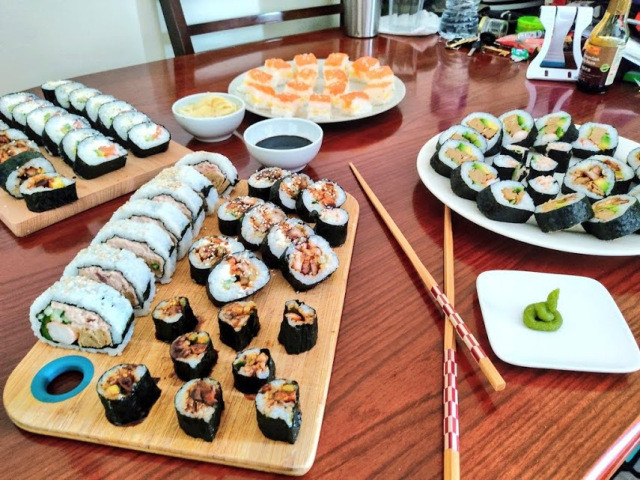
After catering to people from over 15 countries at events, there are some clear winners and losers in the world of Japanese cuisine.
When you take your taste buds on a journey into the world of foreign cuisine, you’re bound to discover some dishes that are easy on the palate while others may take a bit more getting used to.
That’s what our Japanese-language reporter Miho Kazuki found when she moved to Ireland to study. Not only did she learn about her own likes and dislikes; after preparing traditional Japanese dishes for numerous cultural exchange activities she discovered some things about how foreigners respond to food from her home country as well.
During her time overseas, Miho has served Japanese food to foreigners from over 15 countries across Europe, Asia and America, and after repeated trial and error to cater to their palates, she’s found the top five dishes that foreigners want to eat. So let’s get to it and look at the results below!
5. Nikujaga
This dish of simmered potatoes, carrots, onions and meat is a combination people from a lot of countries are familiar with, so there’s nothing that stands out as too unusual here. Even the salty sweet seasoning of soy sauce and sugar is one that’s pleasing to a wide range of palates, so if you’re looking for somewhere safe to begin your journey into Japanese food that’s slightly less well-known, this is a great place to start.
▼ The warm and homely flavours of nikujaga.
4. Ramen
Noodles exist pretty much everywhere, but Japanese ramen is particularly loved for its tasty broth, the most popular of which is soy, miso or tonkotsu (pork bone). Hearty and delicious, a big bowl of steaming hot ramen is another popular choice for foreign palates.
3. Okonomiyaki / Gyoza
Despite being separate dishes, these Osaka-born staples have an equally strong likability factor. Okonomiyaki (okonomi translates to “as you like it” while yaki means “grill”) is often described as a “savoury pancake”, due to the fact that it’s made with cabbage and a milk-egg-flour batter. Add in the fact that the diner gets to choose additional ingredients like pork or cheese to add to the cabbage-and-batter base, and you have a plate of fried goodness with wide-ranging appeal.
Gyoza, or “pot stickers” as they’re known in some countries, are another crowd pleaser, with their pork-and-vegetable filling providing a juicy counterpart to the chewy texture of the dumplings.
▼ Gyoza (top) and okonomiyaki (bottom).
Note the okonomiyaki is missing the usual mayonnaise, seaweed and katsuoboshi fish flake topping, but the BBQ-sauce-like okonomiyaki sauce is well-loved by all.
2. Karaage
Once you learn that karaage refers to deep-fried chicken, it’s easy to understand why this comes in at number two on Miho’s list of popular foods. Japanese fried chicken is typically served with a wedge of lemon to cut through the oiliness of the delicious crunchy coating.
1. Sushi
Coming in at the number one spot on the list is…sushi! In Japan, the word “sushi” brings images of nigiri sushi (“moulded” sushi, with rice on the bottom and a morsel of seafood on top) to mind, but Miho quickly learned that “sushi” to foreigners usually means “norimaki” (“seaweed roll”). The fillings loved by Miho’s overseas friends aren’t what you’d usually find in Japan either, with ingredients like smoked salmon and cream cheese, and teriyaki chicken being some of the most popular.
Just as there are favourite foods, Miho found there are some dishes and ingredients that don’t quite hit the mark for foreigners. Surprisingly, although norimaki is hugely popular, Miho says seaweed on its own is not. After asking her friends about it, the reasons for its unpopularity stem from its black appearance and paper-like texture, which makes it look “ugly”. In Japan, the crispy texture is what makes it so popular, with strips of seaweed commonly eaten with rice at breakfast.
Another dish that’s yet to get a rave response from all the people she’s catered for is Dashimaki Tamago. This rolled omelette, flavoured with a sweet dashi fish soup stock, has a subtle flavour which foreigners have described to Miho as “flat”. This indicates to Miho that people from abroad respond better to dishes with a punchier sauce or soy sauce flavouring.
So there you have it–the best Japanese dishes for foreigners, with a couple of duds thrown into the mix as well. Like all best and worst lists, this ranking will no doubt spark up some heated debate amongst foodies so let us know what you think in the comments section below!
And if you’re looking to recreate some of these traditional Japanese dishes at home, these easy-to-follow instructional videos by actor Hiro Mizushima will help you achieve that authentic flavour you’ve been looking for.
Photos © SoraNews24
● Want to hear about SoraNews24’s latest articles as soon as they’re published? Follow us on Facebook and Twitter!
[ Read in Japanese ]

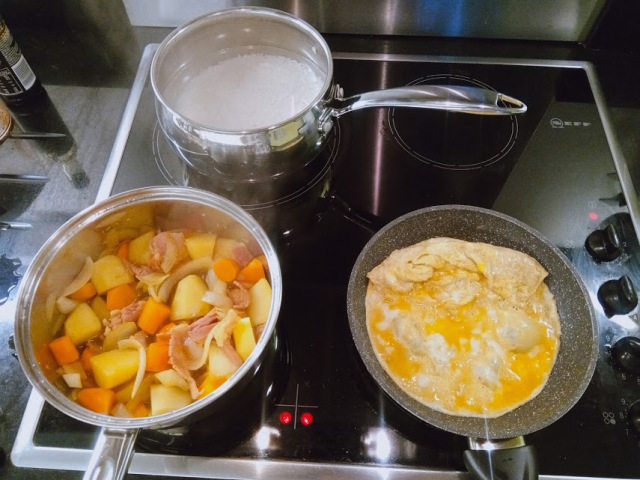
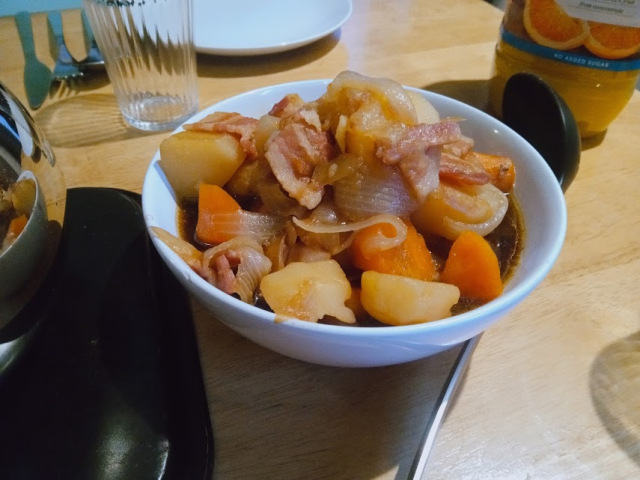
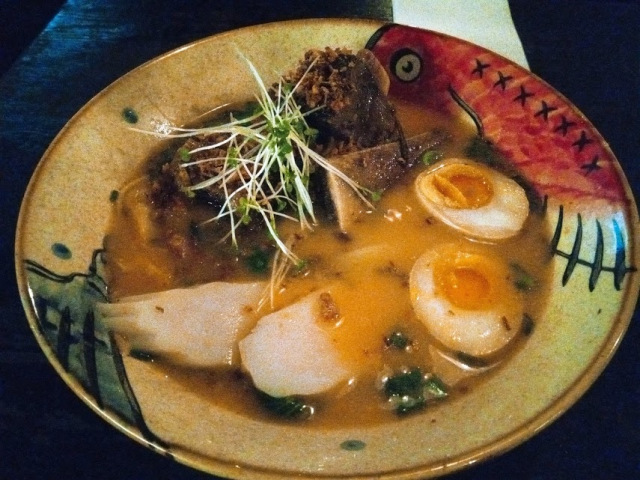
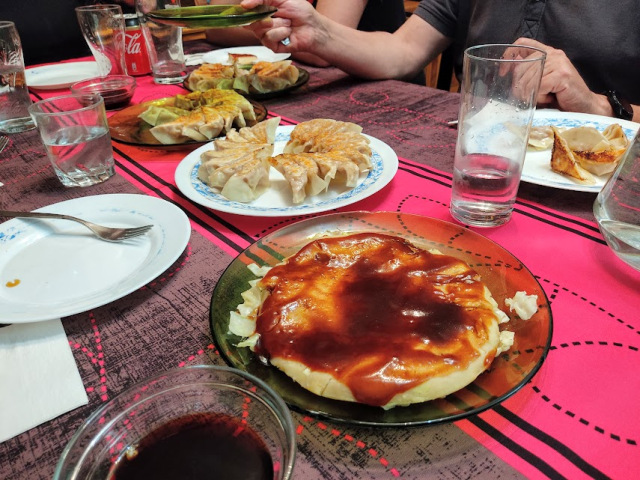
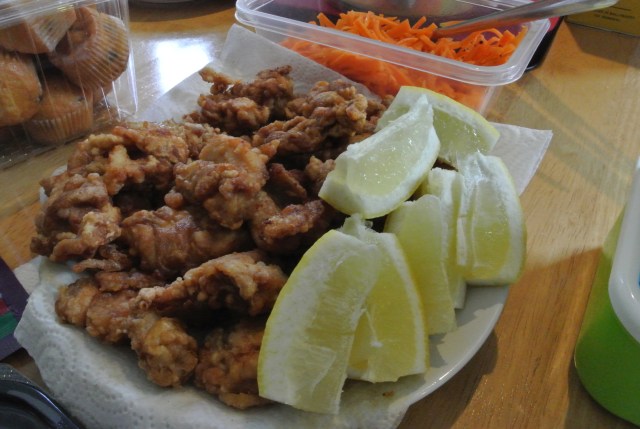
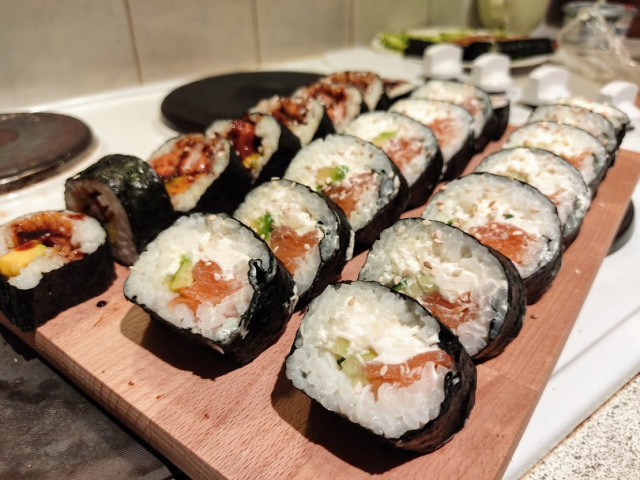

 KFC releases an Otaku Burger…in Spain?!?
KFC releases an Otaku Burger…in Spain?!? We try Ajinomoto’s European Chicken Katsu Curry Style frozen gyoza that has no katsu in it
We try Ajinomoto’s European Chicken Katsu Curry Style frozen gyoza that has no katsu in it How to make okonomiyaki at home【SoraKitchen】
How to make okonomiyaki at home【SoraKitchen】 Okonomiyaki you can eat with one hand? We try a revolutionary new frozen food【Taste test】
Okonomiyaki you can eat with one hand? We try a revolutionary new frozen food【Taste test】 KFC Taiwan now offering chicken and rice menu based on Japanese okonomiyaki pancakes!
KFC Taiwan now offering chicken and rice menu based on Japanese okonomiyaki pancakes! New Nintendo Lego kit is a beautiful piece of moving pixel art of Mario and Yoshi【Photos】
New Nintendo Lego kit is a beautiful piece of moving pixel art of Mario and Yoshi【Photos】 How to order snacks on a Shinkansen bullet train in Japan
How to order snacks on a Shinkansen bullet train in Japan Hello, cosmetics! Clinique teams up with Hello Kitty this summer for first-time collaboration
Hello, cosmetics! Clinique teams up with Hello Kitty this summer for first-time collaboration Demon Slayer: Kimetsu no Yaiba gets new roller coaster attractions and food at Universal Studios Japan
Demon Slayer: Kimetsu no Yaiba gets new roller coaster attractions and food at Universal Studios Japan McDonald’s adds new watermelon frappe and fruity macaron to its menu in Japan
McDonald’s adds new watermelon frappe and fruity macaron to its menu in Japan Cosmetic wizardry: Asian women removing makeup to reveal their true selves goes viral【Video】
Cosmetic wizardry: Asian women removing makeup to reveal their true selves goes viral【Video】 Tsukiji Fish Market Vendor Releases Tuna For Home Assembly
Tsukiji Fish Market Vendor Releases Tuna For Home Assembly High-fashion Totoro cuddle purse is like an elegant stroll in the forest【Photos】
High-fashion Totoro cuddle purse is like an elegant stroll in the forest【Photos】 U.S. Olympic athlete reveals he runs with Yi-Gi-Oh! cards tucked into his uniform【Video】
U.S. Olympic athlete reveals he runs with Yi-Gi-Oh! cards tucked into his uniform【Video】 Japan’s new difficult-to-drink-from beer glass protects your liver, but it’s a brutal experience
Japan’s new difficult-to-drink-from beer glass protects your liver, but it’s a brutal experience Nintendo history you can feel – Super NES, N64, and GameCube controllers become capsule toys
Nintendo history you can feel – Super NES, N64, and GameCube controllers become capsule toys “The most Delicious Cup Noodle in history” – Japan’s French Cup Noodle wins our heart【Taste test】
“The most Delicious Cup Noodle in history” – Japan’s French Cup Noodle wins our heart【Taste test】 Starbucks releases a cute Frappuccino and Unicorn Cake…but not in Japan
Starbucks releases a cute Frappuccino and Unicorn Cake…but not in Japan Kyoto Tower mascot termination reveals dark side behind cute Japanese characters
Kyoto Tower mascot termination reveals dark side behind cute Japanese characters McDonald’s Japan’s Soft Twist Tower: A phantom ice cream only sold at select branches
McDonald’s Japan’s Soft Twist Tower: A phantom ice cream only sold at select branches Yabai Ramen: What makes this Japanese ramen so dangerous?
Yabai Ramen: What makes this Japanese ramen so dangerous? Finally! Nintendo Japan expands Switch 8-bit controller sales to everybody, Online member or not
Finally! Nintendo Japan expands Switch 8-bit controller sales to everybody, Online member or not Japanese government wants to build luxury resorts in all national parks for foreign tourists
Japanese government wants to build luxury resorts in all national parks for foreign tourists To combat declining birth rate, Japan to begin offering “Breeding Visas” to foreigners
To combat declining birth rate, Japan to begin offering “Breeding Visas” to foreigners 10 things you should buy at 7-Eleven in Japan
10 things you should buy at 7-Eleven in Japan Studio Ghibli releases anime heroine cosplay dresses that are super comfy to wear
Studio Ghibli releases anime heroine cosplay dresses that are super comfy to wear Woman charged for driving suitcase without a license in Osaka
Woman charged for driving suitcase without a license in Osaka Studio Ghibli unveils My Neighbour Totoro miniature house model
Studio Ghibli unveils My Neighbour Totoro miniature house model Kyoto experiencing problems with foreign tourists not paying for bus fares, but not on purpose
Kyoto experiencing problems with foreign tourists not paying for bus fares, but not on purpose Fighting mild hunger with a Japanese soda that turns into jelly in the stomach【Taste test】
Fighting mild hunger with a Japanese soda that turns into jelly in the stomach【Taste test】 Studio Ghibli’s Howl’s Moving Castle tapestry unveiled in Japan for first time
Studio Ghibli’s Howl’s Moving Castle tapestry unveiled in Japan for first time McDonald’s new Happy Meals offer up cute and practical Sanrio lifestyle goods
McDonald’s new Happy Meals offer up cute and practical Sanrio lifestyle goods Sales of Japan’s most convenient train ticket/shopping payment cards suspended indefinitely
Sales of Japan’s most convenient train ticket/shopping payment cards suspended indefinitely Sold-out Studio Ghibli desktop humidifiers are back so Totoro can help you through the dry season
Sold-out Studio Ghibli desktop humidifiers are back so Totoro can help you through the dry season Japanese government to make first change to romanization spelling rules since the 1950s
Japanese government to make first change to romanization spelling rules since the 1950s Foreigner’s request for help in Tokyo makes us sad for the state of society
Foreigner’s request for help in Tokyo makes us sad for the state of society Ghibli founders Toshio Suzuki and Hayao Miyazaki contribute to Japanese whisky Totoro label design
Ghibli founders Toshio Suzuki and Hayao Miyazaki contribute to Japanese whisky Totoro label design Doraemon found buried at sea as scene from 1993 anime becomes real life【Photos】
Doraemon found buried at sea as scene from 1993 anime becomes real life【Photos】 Tokyo’s most famous Starbucks is closed
Tokyo’s most famous Starbucks is closed Princesses, fruits, and blacksmiths: Study reveals the 30 most unusual family names in Japan
Princesses, fruits, and blacksmiths: Study reveals the 30 most unusual family names in Japan Shakey’s creates Japanese-style-pizza pizza with new Okonomiyaki Pizza
Shakey’s creates Japanese-style-pizza pizza with new Okonomiyaki Pizza Japanese politician apologizes to prime minister for calling wife’s cooking “Hiroshima-yaki”
Japanese politician apologizes to prime minister for calling wife’s cooking “Hiroshima-yaki” The 5 best Japanese bento to buy at Kyoto Station
The 5 best Japanese bento to buy at Kyoto Station Japanese ramen chain becomes a hot topic with foreigners on Reddit, but is it any good?
Japanese ramen chain becomes a hot topic with foreigners on Reddit, but is it any good? Japanese condiment company Kikkoman encourages Brits to desecrate white rice with tasty sauce
Japanese condiment company Kikkoman encourages Brits to desecrate white rice with tasty sauce BonAppetour startup lets you cook and dine with Tokyo locals in their homes
BonAppetour startup lets you cook and dine with Tokyo locals in their homes Newly opened restaurant in Osaka boasts a new evolution of okonomiyaki
Newly opened restaurant in Osaka boasts a new evolution of okonomiyaki The Fuwatoro Yamaimo Teppan just might be 7-Eleven Japan’s dish of the year【Taste test】
The Fuwatoro Yamaimo Teppan just might be 7-Eleven Japan’s dish of the year【Taste test】 Microwavable okonomiyaki that you can eat with one hand? Yes, please!
Microwavable okonomiyaki that you can eat with one hand? Yes, please! Does anime food have a place in the 3D world?
Does anime food have a place in the 3D world? Japanese convenience store pasta called “a monstrosity” by foreigners online
Japanese convenience store pasta called “a monstrosity” by foreigners online Can Kyoto supermarket takeout let you enjoy the local cuisine without fancy restaurant prices?
Can Kyoto supermarket takeout let you enjoy the local cuisine without fancy restaurant prices? Danish Radio Big Band welcomes new Japanese conductor with big band airport bash【Video】
Danish Radio Big Band welcomes new Japanese conductor with big band airport bash【Video】 Taco Bell Osaka branches now selling okonomiyaki burritos, promise delicious fusion flavor
Taco Bell Osaka branches now selling okonomiyaki burritos, promise delicious fusion flavor No time to cook? No problem! Three easy ways to improve instant curry
No time to cook? No problem! Three easy ways to improve instant curry Are you game enough to eat Fire Ramen at this Japanese restaurant in Kyoto?
Are you game enough to eat Fire Ramen at this Japanese restaurant in Kyoto?
Leave a Reply